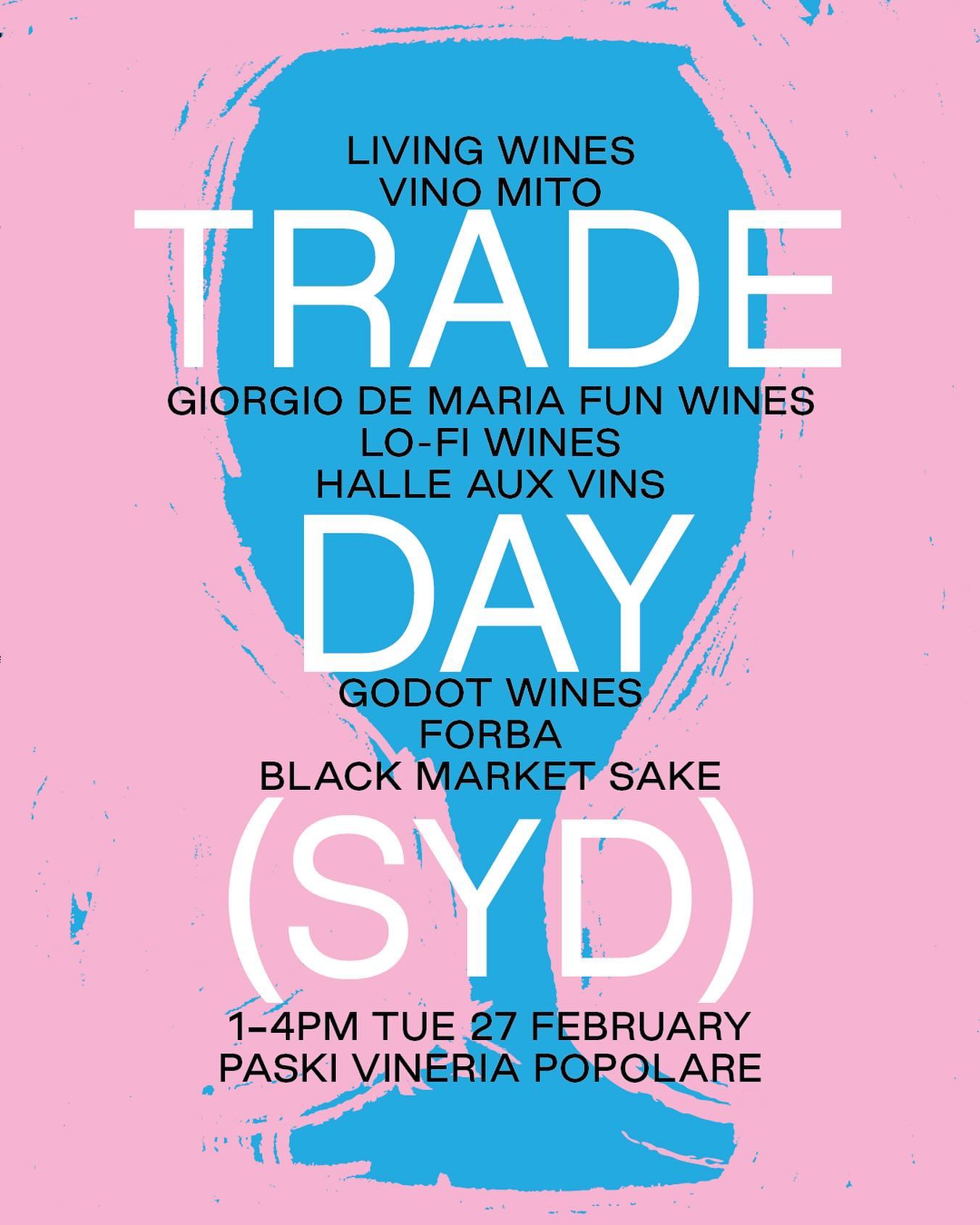Introduction to the Foodtourist Top Fifty Cookbooks
The following list is our compilation of the Foodtourist Top Fifty cookbooks that we think have contributed to a better understanding of cooking and cuisines.
It is an idiosyncratic list because we want to delve into all sorts of culinary nooks and crannies based on things we are interested in (all types of Asian foods, for example), places we have been (for example, New Orleans where we found very bad food and some stunning food cooked by chefs such as Susan Spicer and Donald Link), Provence (where the food is often based on the freshest and most intense produce that you can find anywhere) and South-East Asia and Japan which we have visited many times and have some of the most enduring food memories.
You will also notice that some of the books we have included are those that include very detailed descriptions of how to create a dish that is apparently simple. Examples in the Foodtourist Top Fifty are the writing of Paul Bertolli in Cooking by Hand and Shizuo Tsuji in Japanese Cooking: A Simple Art.
We have removed all the cookbooks that we regard as being “historic” – in our case these are, with a few exceptions, books that were written more than seventy years ago. We will be writing more about some of these books in a different forum which we will be announcing soon.
We will gradually be loading a detailed review for each of the books in the Foodtourist Top Fifty Cookbooks (most of them are already there), so please be patient, but we will try to get all of them posted as soon as possible.
1 – French Provincial Cooking by Elizabeth David

The classic tour de force of regional French food through the eyes of one of the greatest food writers of the 20th century which we believe definitely deserves its place in the Foodtourist Top Fifty cookbooks.
We believe that French Provincial Cooking is one of the most important cookbooks ever published. It is Elizabeth David at her best. Her broad culinary knowledge, her evocative writing style, her forensic research skills and her humanity all shine through.
Elizabeth David was no ordinary person. She developed her taste for food while studying French history at the prestigious Sorbonne in Paris.
She became obsessed with French food and developed a desire to learn how to cook it well. She was a leader in the publication of modern food books with her first offering being in 1950!
You can read a more detailed review by clicking on the link below:
French Provincial Cooking by Elizabeth David
2 – Japanese Cooking: A Simple Art by Shizuo Tsuji

Japanese Cooking: A Simple Art by Shizuo Tsuji is a thoughtful and careful book surveying many of the great recipes of Japan. Don’t skip the excellent introduction by M K Fisher – it is a gem!
He is a true Renaissance man publishing books on topics as diverse as gastronomy, travel and music as well as laying claim to ownership of the world’s largest collection of Bach recordings. He also was a graduate of the Waseda University in Tokyo where he gained a degree in French Literature.
We turned to this book when we were having problems cooking a Chawan Mushi and the explanation about the ratio of stock to eggs provided us with a recipe that has always worked!
You can read a more detailed review by clicking on the link below:
Japanese Cooking: A Simple Art by Shizuo Tsuji
3 – Time Life ‘The Good Cook’ Series with Richard Olney (Editor)

The Good Cook series is an enduring classic in the cookbook repertoire. The Time Life Series is still as relevant today as the day it was released.
The series was edited by Richard Olney who was assisted by a litany of future stars of the food writing firmament.
A feature of these books is the melding of superb photography with clear explanatory text and precise, clear recipes. The techniques and recipes cover most of the essential repertoire for chefs and home cooks alike.
The series is timeless and endearing and is the perfect gift for any budding cooks who want to master the basics as well as more advanced techniques. We truly believe that this series has a definite place in all cookbook series including pur Foodtourist Top Fifty choices.
You can read a more detailed review by clicking on the link below:
Time Life ‘The Good Cook’ Series with Richard Olney (Editor)
4 – Thai Food by David Thompson
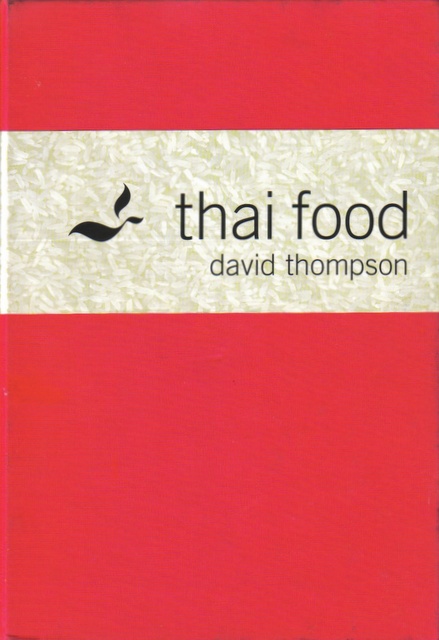
Thai Food catapults straight into the pantheon of greats because it brilliantly captures the essentials of an entire cuisine.
And this is not a minor regional cuisine, but one of the most complex and wide-ranging cuisines of the world. It is also one that is understood by very few Western authors or chefs.
Thompson is a master of both writing and cooking – we have enjoyed his complex cooking for many, many years and continue to do so. We chose this book as representative of the best of Thai recipes for our Foodtourist Top Fifty cookbooks.
You can read a more detailed review by clicking on the link below:
5 – Simple French Food by Richard Olney
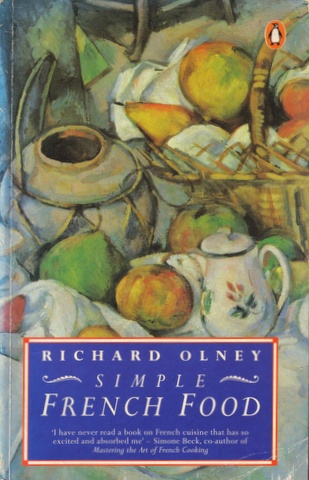
Simple French Food is a thoughtful, erudite and compelling book from one of the greatest food writers of the last century. Olney’s passion for French food and for simplicity in preparation and presentation shines through every page. This is an essential addition to every food lover’s library.
Richard Olney deserves his place as one of the great food writers of the twentieth century.
There are two great cookbooks that were written at similar times and within a short distance of each other for a very similar purpose. One was the famous La Cuisine du Comté de Nice by the mayor of Nice, Jacques Médecin and the other was Simple French Food by American expatriate Richard Olney who lived along the coast near the town of Bandol. The purpose, clearly stated in each book, was a concern about the disappearing culinary traditions of the region.
You can read a more detailed review by clicking on the link below:
Simple French Food by Richard Olney
6 – The Zuni Café Cookbook by Judy Rodgers
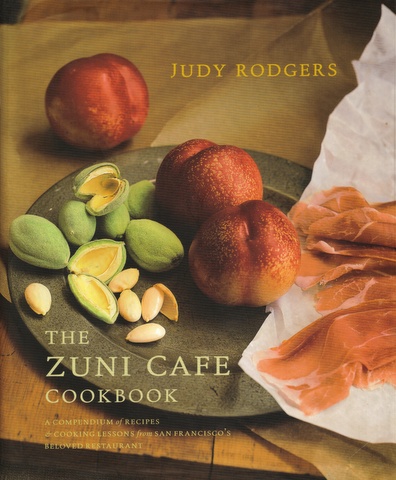
The Zuni Café is one of our favourite places to eat in the world and Zuni Café Cookbook by Judy Rodgers is one of the most inspiring references that is compulsory in every serious food lover’s cookbook collection.
We love the fact that the book represents a complete departure from the worrying trend among so-called fashionable cookbooks of reducing all recipes to a few lines of description and only two or three ingredients.
Instead, the recipes are accompanied by thoughtful, erudite and often witty dissertations that tell you why she does things and why the combinations of ingredients are necessary.
You can read a more detailed review by clicking on the link below:
The Zuni Café Cookbook by Judy Rodgers
7 – Cooking by Hand by Paul Bertolli
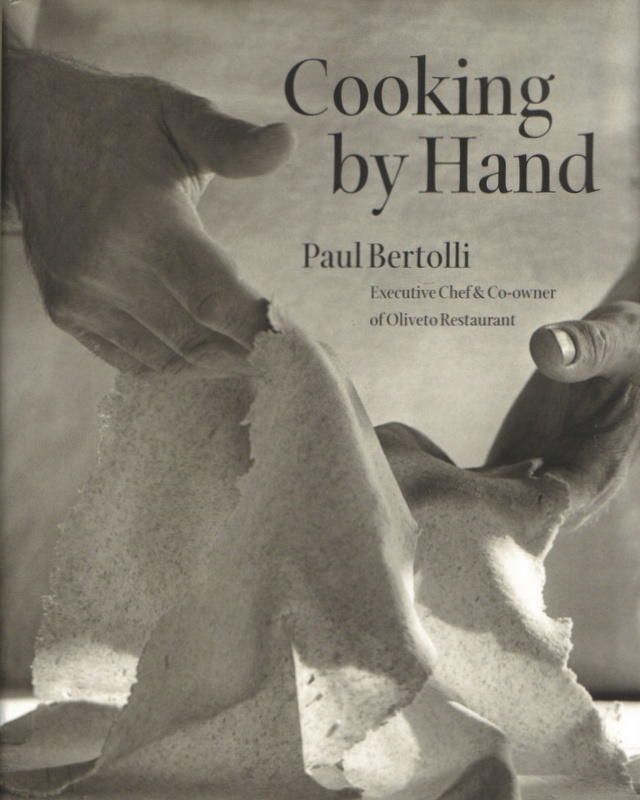
Cooking by Hand by Paul Bertolli has entered the pantheon of great cookbooks because of his deep understanding of food products and the clarity with which he sets out his ideas. He is also one of our favourite chefs. This is a classic book with practical guidelines for everything from charcuterie making to the art of perfect pasta.
Rather than being organised along traditional lines, this book is, instead, a collection of essays that explore a number of topics in depth. One topic is ripeness – it almost goes without saying that ripeness is desirable, but in these days of supermarkets manipulating fruit and vegetables to suit the demands of long-haul travel many items are certainly either not ripe or have ripeness induced artificially.
You can read a more detailed review by clicking on the link below:
Cooking by Hand by Paul Bertolli
8 – The Classic Italian Cookbook by Marcella Hazan

Even though it was published in the mid-seventies we still think The Classic Italian Cookbook by Marcella Hazan is the best of Marcella’s books.
Marcella Hazan is a feisty character who is highly opinionated in a very nice way. She ‘believes’ in Italian food and she knows how to cook it therefore she expresses her opinions about how it should be done forcefully and with a great deal of clarity.
Many years ago we were lucky to attend one of her cooking classes in Melbourne and came away from that class knowing that we had been fortunate to spend time with someone who was completely passionate about what she had dedicated her life to.
You can read a more detailed review by clicking on the link below:
The Classic Italian Cookbook by Marcella Hazan
9 – La Bonne Cuisine de Madame E. Saint-Ange by Evelyn Saint-Ange
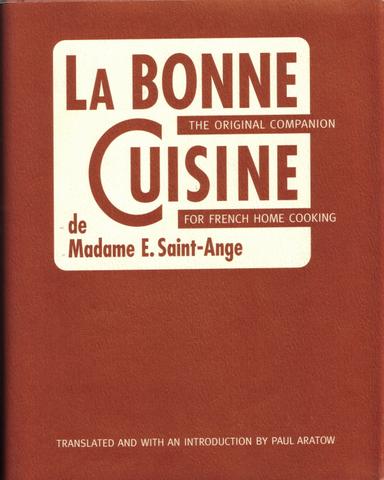
Madame E. Saint-Ange is an enigma.
Little has been written about her in the English language and we can find very few accounts of her life in the French language either, although it is clear that she was a French woman by the name of Marie Ebrard who, for many years, wrote a cooking column for the magazine Le Pot au Feu.
La bonne cuisine de Madame E. Saint-Ange is a beloved classic of the French cooking literature. We are lucky that Chez Panisse co-founder and lover of all things French, Paul Aratow, decided to take on the mammoth and exacting task of translating her extraordinary work into English.
You can read a more detailed review by clicking on the link below:
La Bonne Cuisine de Madame E. Saint-Ange by Evelyn Saint-Ange
10 – The Cook’s Companion by Stephanie Alexander
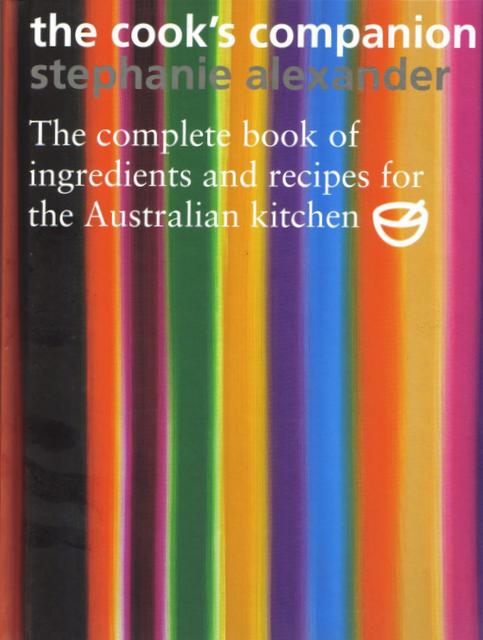
The Cook’s Companion by Stephanie Alexander is one of those truly great cookbooks that rank alongside The Joy of Cooking and La Bonne Cuisine in terms of the influence the books have had in their home country and beyond.
Many people write about food, but there are few true food writers. Only a handful combine a deep understanding of and appreciation for food and at the same time are able to convey a clear and concise message. Stephanie Alexander is one such writer.
After running a succession of highly acclaimed restaurants in Melbourne, Stephanie Alexander gradually moved into food communication, writing a classic cookbook and making personal and media appearances to spread her messages about the importance of food and wine in daily life.
First published in 1996, The Cook’s Companion has recently been revised, rewritten and re-released.
You can read a more detailed review by clicking on the link below:
The Cook’s Companion by Stephanie Alexander
11 – Land of Plenty: A Treasury of Authentic Sichuan Cooking by Fuchsia Dunlop
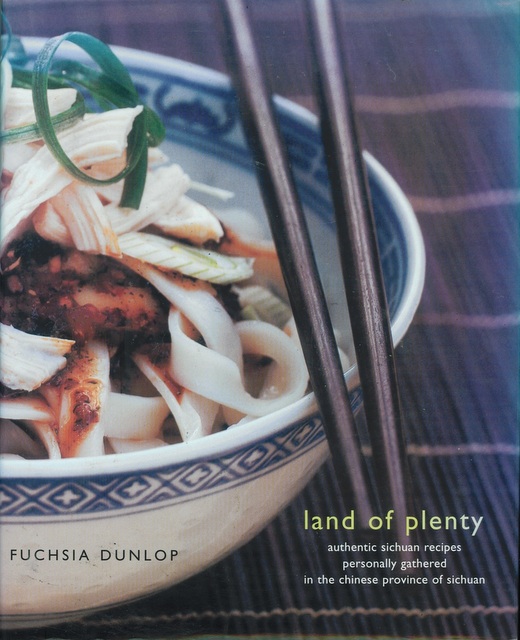
Land of Plenty by Fuchsia Dunlop is a valuable addition to our knowledge of the vibrant and complex cuisine of the Sichuan province of China. The fiery dishes have not been dumbed down for timid Western palates.
Her writing is both scholarly yet engaging and we love the stories that she has to tell about the region, the people and the highly addictive food.
You can read a more detailed review by clicking on the link below:
Land of Plenty: A Treasury of Authentic Sichuan Cooking by Fuchsia Dunlop
12 – Cuisine Minceur by Michel Guérard
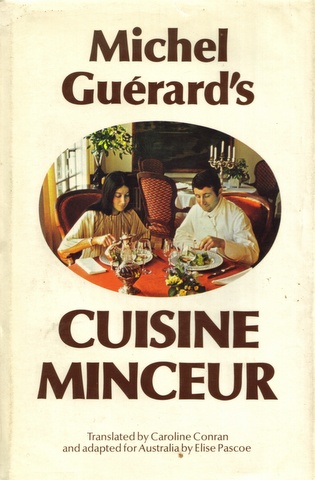
Cuisine Minceur by Michel Guérard is one of our favourite and most cherished cookbooks from the 1970s when the Cuisine Minceur craze was sweeping the Western world.
Michael Guérard eschewed the use of fat and encouraged us to eat really well without the unhealthy bits. But the recipes were exciting and accessible even if exacting.
We had to make sure that we used .25 of a teaspoon and not .5 of a teaspoon. But the fresh tomato soup with pounded basil was a revelation. The use of arachide oil and fromage blanc was exciting for the time, thus making the Aubergine Caviar recipe one to treasure.
You can read a more detailed review by clicking on the link below:
Cuisine Minceur by Michel Guérard
13 – The Art of Simple Food by Alice Waters
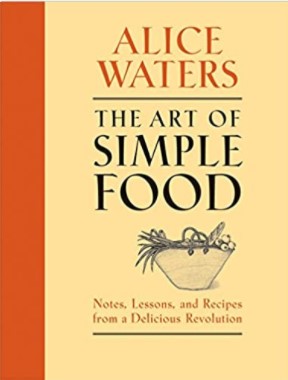
Alice Waters is not only a great chef she is also a talented writer. The Art of Simple Food gives us an insight into why Chez Panisse has been such a great restaurant for such a long time.
A visit to Chez Panisse in 1985 literally changed the way we thought about food. Everything we were served appeared simple, but it was all absolutely delicious!
We were even lucky enough to be there during the peach season and were served peach accompanied by ice cream – simplicity on a plate which only worked because the peach was simply perfect!
You can read a more detailed review by clicking on the link below:
The Art of Simple Food by Alice Waters
14 – Good Things by Jane Grigson
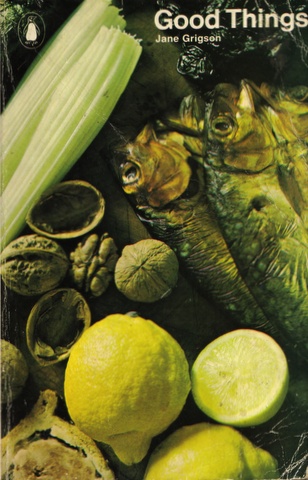
All of Jane Grigson’s books are packed with authoritative information and wonderful recipes that work and Good Things is no exception.
We could have chosen any of Grigson’s books for this review, however we finally decided on this collection of essays because of some of the heartfelt writing in the introduction.
In it she pleads for people to contribute to the deepening of the food culture and to eschew fast foods and return to the roots of cooking that deliver so much pleasure at the table.
You can read a more detailed review by clicking on the link below:
15 – The Book of Jewish Food by Claudia Roden
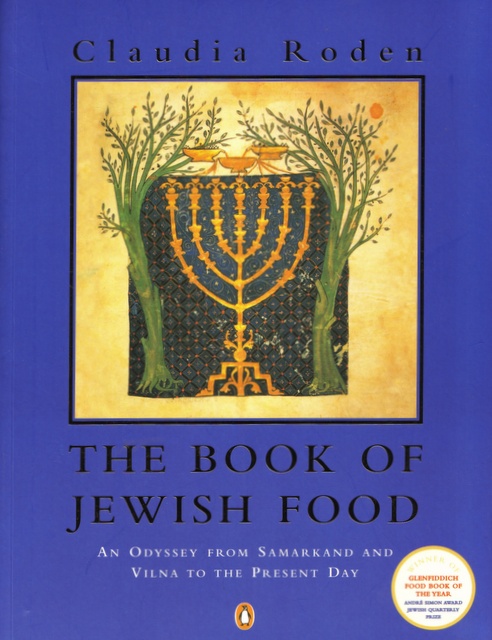
The Book of Jewish Food by Claudia Roden is a scholarly yet approachable survey of Jewish food and cooking techniques throughout the world.
This lengthy tome is the result of fifteen years of painstaking research by author Claudia Roden. Jewish food from Morocco, Europe, the Middle East, Iran, India and even as far as China is surveyed and chronicled.
You can read a more detailed review by clicking on the link below:
The Book of Jewish Food by Claudia Roden
16 – Mastering the Art of French Cooking by Julia Child

Mastering the Art of French Cooking by Julia Child deserves its place in every food lover’s collection. The recipes are written with rare precision and make no concessions to the “quick and easy” brigade or the “low-fat, low-flavour” movement.
After the war her husband was stationed at the American Embassy in Paris and it was here that Julia developed her passion for French food and cooking that was to remain with her for the rest of her long life.
You can read a more detailed review by clicking on the link below:
Mastering the Art of French Cooking by Julia Child
17 – La Cuisine du Comté de Nice by Jacques Médecin
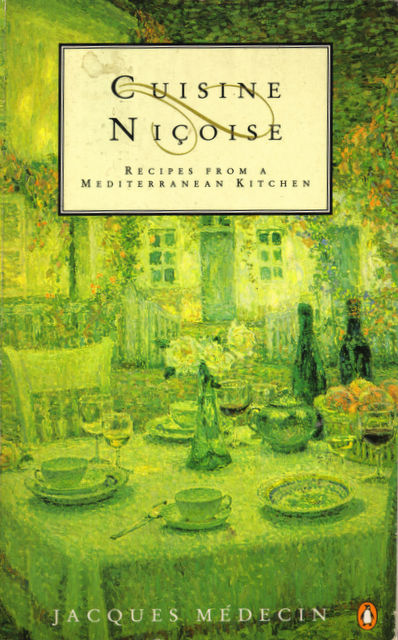
La Cuisine du Comté de Nice is a classic book from the highly opinionated Mayor of Nice Jacques Médecin setting out exactly what the wonderful cuisine of the Nice area is and how it should be prepared.
If you have ever wondered what the exact ingredients for a Niçoise Salad should be, then this is the source you should turn to.
And so, Jacques Médecin begins his tour of Niçoise cuisine. And why? In his own words:
Because it seems to me that I belong to the last generation which has had traditional recipes handed down to it.
You can read a more detailed review by clicking on the link below:
La Cuisine du Comté de Nice by Jacques Médecin
18 – The Glorious Foods of Greece by Diane Kochilas
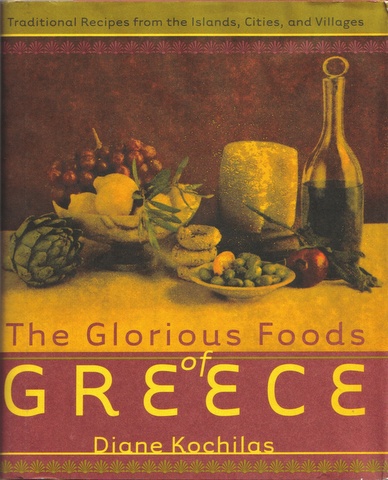
The Glorious Foods of Greece by Diane Kochilas is a masterful book that surveys the breadth and depth of traditional Greek cooking in a lively, entertaining yet scholarly way.
The chapters are organised by region rather than recipe type and this helps to provide an understanding of the many regional differences that occur from the depths of the Peleponnese to the northern shores of the Aegean that push up against Turkey.
It is a key book for anyone wanting to understand the true cooking of this fascinating country.
You can read a more detailed review by clicking on the link below:
The Glorious Foods of Greece by Diane Kochilas
19 – Roast Chicken and Other Stories by Simon Hopkinson
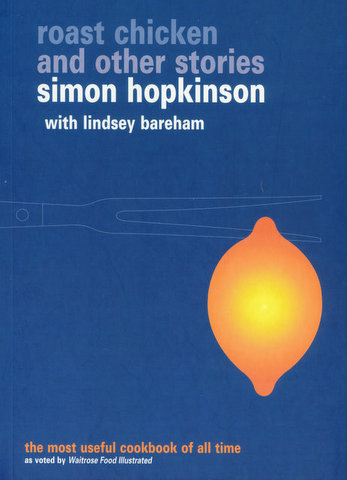
Roast Chicken and other stories by Simon Hopkinson with Lindsey Bareham is a great cookbook for a number of reasons.
The first is the format. It explores about forty small topics, a chapter at a time presenting a few recipes for each topic.
The second is that he seems to favour classic recipes and just wants to make them easy to cook and for them to be more satisfying. And the third reason is that the things he writes about are the things we like to eat.
You can read a more detailed review by clicking on the link below:
Roast Chicken and Other Stories
20 – Flavors of the Riviera by Colman Andrews

Flavors of the Riviera by Colman Andrews is an insightful and thoroughly-researched survey of the true food of north-west Italy and southern France.
When Colman Andrews decides to tackle a food topic he does so with a thoroughness that is commendable.
He has an uncanny ability to locate the ‘right’ people to help him understand the local cuisine and local produce.
You can read a more detailed review by clicking on the link below:
Flavors of the Riviera by Colman Andrews
21 – European Peasant Cookery by Elisabeth Luard

European Peasant Cookery is yet another important contribution from Elisabeth Luard and her publisher Grub Street with this massive survey of food from 25 countries from Turkey to Iceland.
We get the overwhelming feeling that what this book does is codify recipes from across many European countries that otherwise may have ceased to be known as new generations turned to fast foods and supermarket ‘convenience‘ packages rather than continue the traditions of their ancestors.
So it is both an interesting book because the recipes are well-written and useful and it is also an important book in setting down recipes that otherwise may have become forgotten relics of a bygone era.
You can read a more detailed review by clicking on the link below:
European Peasant Cookery by Elisabeth Luard
22 – The Essential Cuisines of Mexico by Diana Kennedy
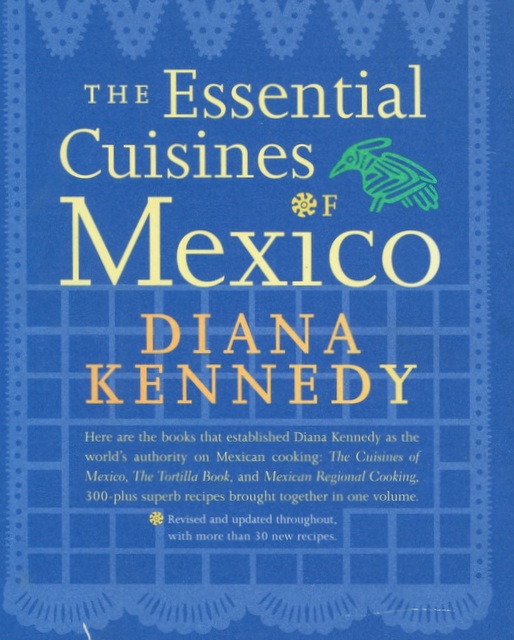
The Essential Cuisines of Mexico is a compendium of Diana Kennedy’s three major works, The Cuisines of Mexico, The Tortilla Book, and Mexican Regional Cooking. Kennedy writes with authority and an obvious love for the country, the people and the food.
Some writers have called Diana Kennedy the Julia Child of Mexican cooking. Both were enthusiastic amateur cooks who became the spokesperson for an entire cuisine – Child for American cuisine and Kennedy for Mexican.
You can read a more detailed review by clicking on the link below:
The Essential Cuisines of Mexico by Diana Kennedy
23 – The Legendary Cuisine of Persia by Margaret Shaida
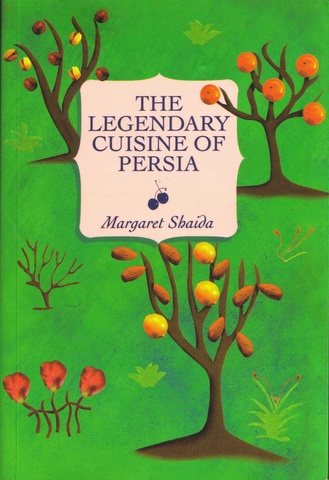
This Glenfiddich Food Book of the Year award winner is one of the best surveys of this important cuisine. Margaret Shaida includes much information on the cultural history of Persia (Iran) as well as many insights into the techniques required for reproducing the recipes in the home kitchen.
Margaret Shaida was born in the United Kingdom but married an Iranian and went to live in that country for 25 years. It was here that she learned Persian cooking techniques from her extended family. She also became obsessed with the Tehran markets and the beautiful produce they offered.
You can read a more detailed review by clicking on the link below:
The Legendary Cuisine of Persia by Margaret Shaida
24 – Bouchon by Thomas Keller
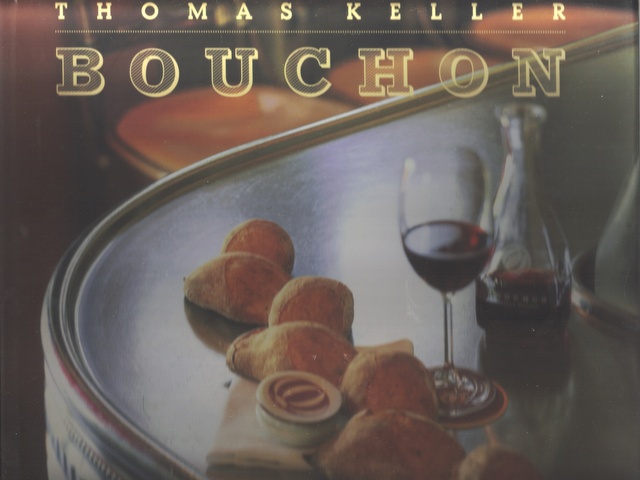
Thomas Keller is rightly regarded as one of the world’s leading chefs. He is a passionate, obsessive and masterful practitioner who has been delighting diners at his Yountville establishment, The French Laundry for many years. He has also opened a New York restaurant, Per Se, in the Times Warner building.
Jeffrey Cerciello is the chef at Bouchon and collaborated with Keller in assembling this massive work. He trained in the United States but then worked in Spain with legendary Feran Adria at El Bulli and then later worked with Keller at The French Laundry.
This is a large book but not a daunting book. It is cutting edge in its explanations of technique but the recipes are deeply-rooted in hundreds of years of tradition. There is nothing faddish about any of the recipes so you will be able to return to these recipes year after year as you explore the delights of the magic cuisine of France.
You can read a more detailed review by clicking on the link below:
25 – South East Asian Food by Rosemary Brissenden
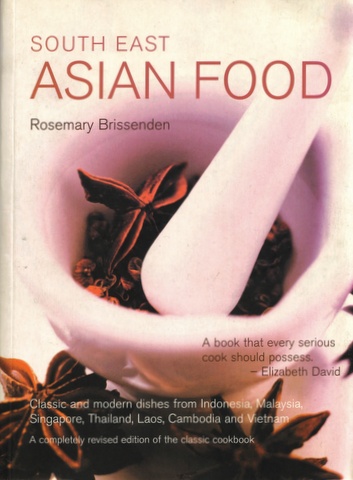
An authoritative survey of south-east Asian cuisine by one of the world’s authorities on the subject, Rosemary Brissenden.
In her introduction to this revised and rewritten version of her classic cookbook, Rosemary Brissenden says:
“I believe cooks feel most comfortable when they know something of both the culinary and cultural contexts of the food they are preparing”.
With this we heartily agree!
You can read a more detailed review by clicking on the link below:
South East Asian Food by Rosemary Brissenden
26 – Chinese Gastronomy by Hsiang Ju Lin and Tsuifeng Lin
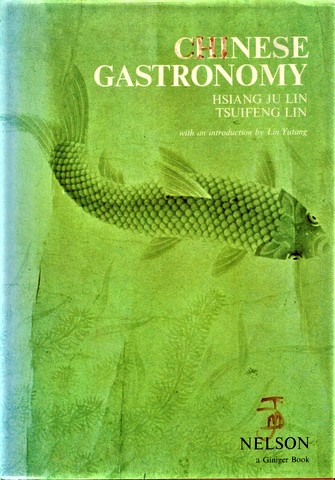
Lin Yutang is a distinguished Chinese artist. His wife (Tsuifeng Lin) and daughter (Hsiang Ju Lin) have used his artistic skills to decorate this important book on Chinese cuisine.
We really like the fact that the authors of this book have not tried to separate the food from the cultural and historical context. In fact they have put these front and centre.
We never tire of this book as it combines culture, deep thought and excellent recipes that we return to time and time again.
You can read a more detailed review by clicking on the link below:
Chinese Gastronomy by Hsiang Ju Lin and Tsuifeng Lin
27 – Indonesian Regional Cooking by Sri Owen
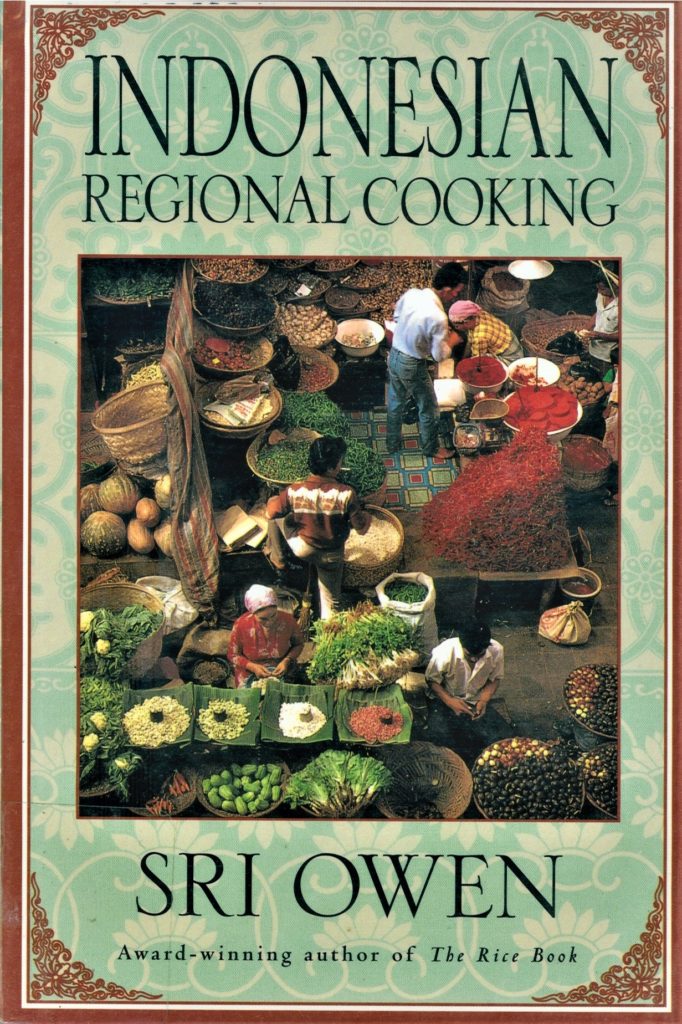
Sri Owen, the author of highly-regarded The Rice Book, is also an expert on regional Indonesian cooking – which is no easy task considering the myriad influences from both nearby Malaysia and from the west that combine to make this such an interesting array of cuisines.
This book is an important survey of the variety of cooking styles that contribute to the cuisine of this vast archipelago.
Indonesian Regional Cooking by Sri Owen is widely regarded as a classic book on Indonesian food. As with most seminal food writings, there are a number of different publications and variations of Sri Owen’s masterpiece.
You can read a more detailed review by clicking on the link below:
Indonesian Regional Cooking by Sri Owen
28 – The Whole Beast: Nose to Tail Eating by Fergus Henderson
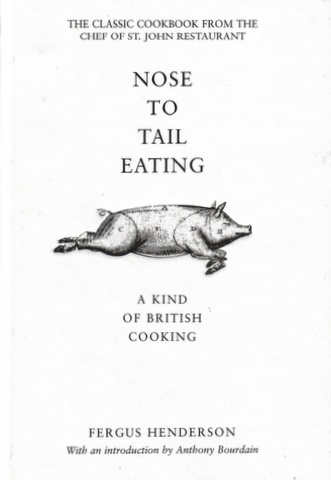
Nose to Tail Eating by Fergus Henderson is a small, elegant book packed full of great recipes that can be attempted in the home kitchen. While some are for the more adventurous, most are quite straightforward, yet delicious.
We once made a special detour to London to make sure that we could eat at Fergus Henderson’s St John restaurant. And we were not disappointed.
This restaurant helps prove the fact that if you cook traditional foods with care and attention then people will keep going back for food that is familiar yet exciting.
You can read a more detailed review by clicking on the link below:
The Whole Beast: Nose to Tail Eating by Fergus Henderson
29 – All About Braising: The Art of Uncomplicated Cooking by Molly Stevens

All About Braising: The Art of Uncomplicated Cooking by Molly Stevens is an excellent book about an intriguing topic. We love the technique of braising whether it be for meats or vegetables or legumes or nuts. This book sets out the techiques required in appealing detail.
Molly uses the following words to describe braising: “cooking food slowly and at low temperatures in a closed pot with a little liquid” This is a very simple and clever way to describe this ultimately simple yet demanding cooking technique.
Yes, you must cook the food slowly – merely tremble the liquid on the stove top. Yes, it must be at a low temperature to get the right level of heat in the liquid in the braise. Yes, a closed lid helps control the environment and the temperature. And a little liquid means that you are not boiling or poaching the food – these are very different cooking methods.
In braising you are looking to get the protagonists to gradually absorb the cooking liquids.
This book sets out many good recipes to show you how to achieve the results which we have been striving for over the past three decades using this amazingly useful technique.
You can read a more detailed review by clicking on the link below:
All About Braising: The Art of Uncomplicated Cooking
30 – The Slow Mediterranean Kitchen by Paula Wolfert
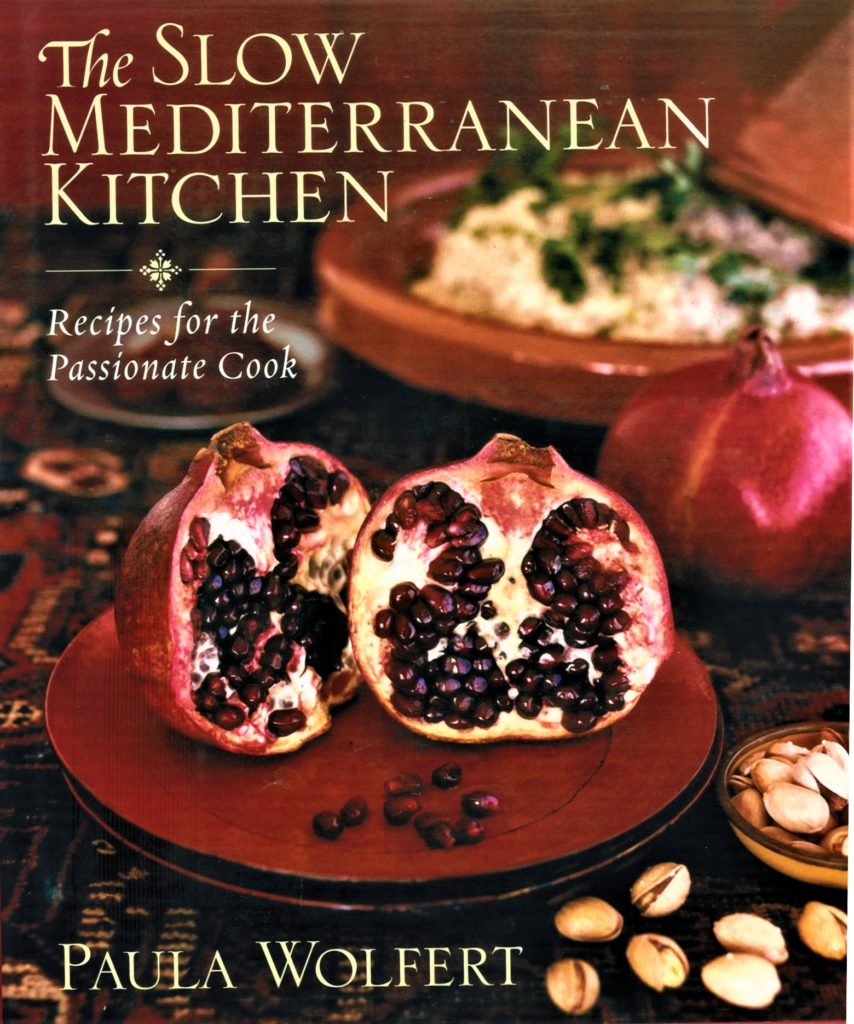
The Slow Mediterranean Kitchen by Paula Wolfert entreats us to take more time in preparing for and cooking our foods. As usual with her books, this one has well-crafted recipes that are precise and easy to follow.
This book is welcome relief among all those ‘quick and easy’ recipe books that are cluttering the shelves of the bookstores.
We would also suggest that you read the biography of Wolfert’s life called “Unforgettable” which chronicles her food adventures and her absolute determination to uncover interesting recipes even when her health and mental ability was declining. It is an amazing book.
You can read a more detailed review by clicking on the link below:
The Slow Mediterranean Kitchen by Paula Wolfert
31 – Moosewood Cookbook by Mollie Katzen
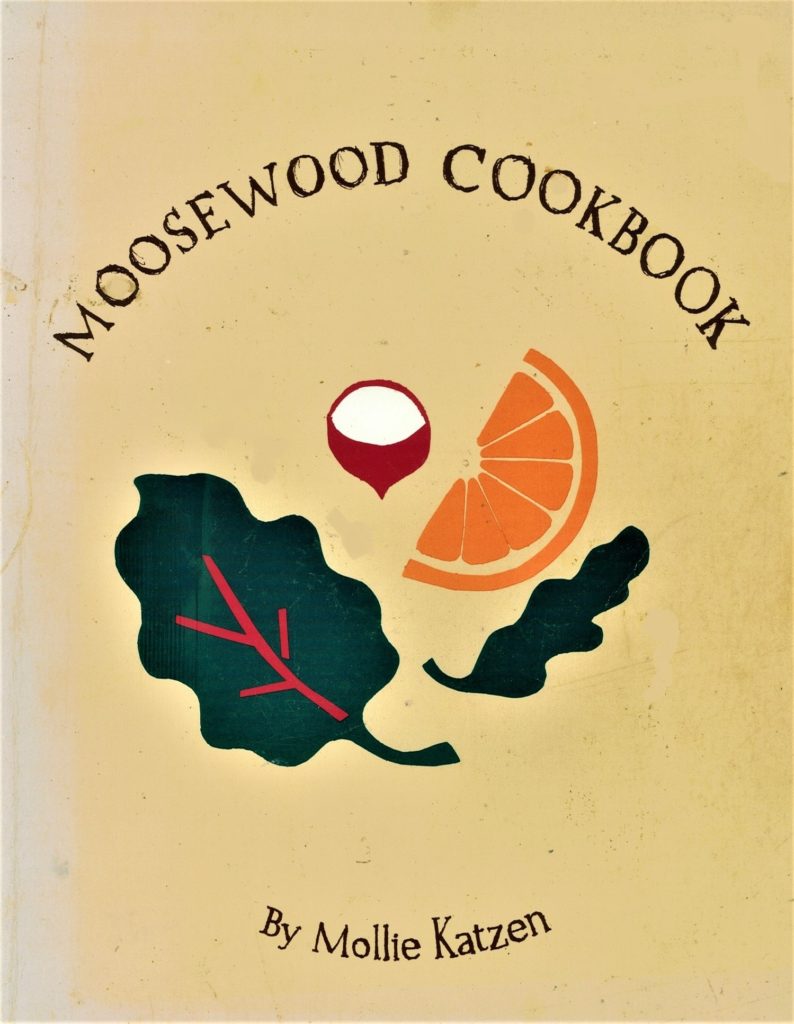
It is no wonder that the Moosewood Cookbook is one of the best selling cookbooks ever! It is written with imagination and directness and the recipes are easy to imagine and to prepare.
Ever since it was released in 1977 this cookbook has been receiving justifiable accolades.
It gained attention both for its quirky presentation (including drawings by the author) and for the relative simplicity of the recipes.
In fact almost an entire generation of people who were seeking a healthier style of food sought comfort in this book.
We love the recipes for the soups (both hot and cold) and many of the standard dishes including the recipe for Ratatouille.
You can read a more detailed review by clicking on the link below:
Moosewood Cookbook by Mollie Katzen
32 – River Café Cook Book by Gray and Rogers
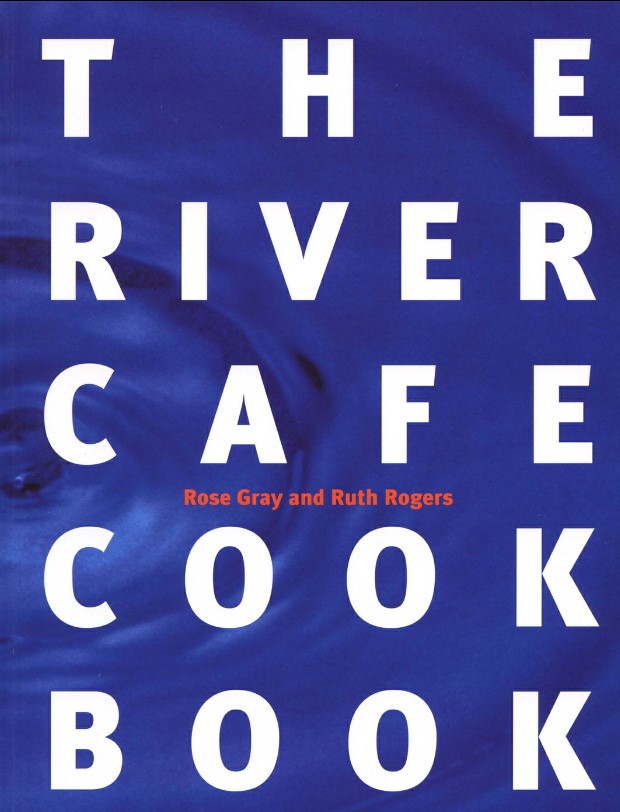
The River Café Cook Book by Gray and Rogers is a compendium of recipes and techniques from the owners of the wonderful restaurant on the banks of the Thames in London that we enjoy visiting so much.
The food here looks simple, but is based on the highest quality ingredients available, ensuring that every bite you take is perfection.
During our visit to the River Café we appreciated the trouble they went to to source the very best ingredients and to cook those ingredients in such a way that it brought our their best qualities rather than masking them with overdone sauces or too many spices.
We also found the service to be very good and cheerful.
You can read a more detailed review by clicking on the link below:
33 – The Cuisine of Armenia by Sonia Uvezian
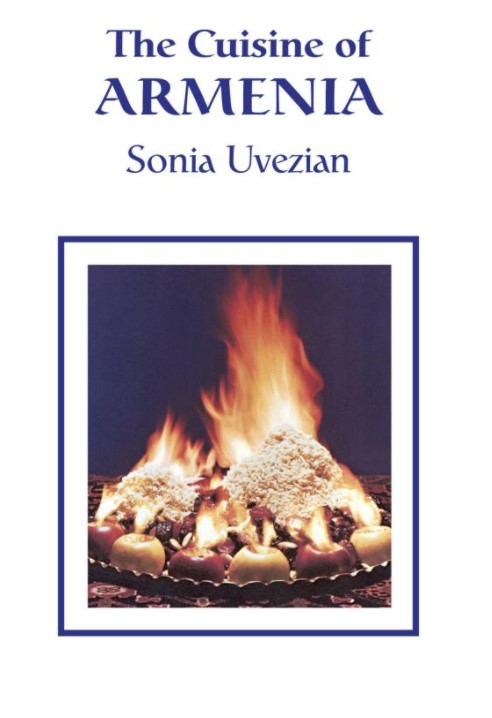
The Cuisine of Armenia by Sonia Uvezian deserves its place in every food lover’s library because it clearly and precisely explains the vibrant and exciting dishes that comprise the cuisine of this now small country that sits at the crossroads of the world. We could have chosen a book from nearby Georgia for the Foodtourist Top Fifty Cookbooks but we think this book will reward anyone who reads it.
Before we reviewed this book we thought we should understand more about this fascinating country and the influences that have driven its geo-political circumstances and how the cuisine has been influenced by its geography, climate and history.
We discovered that it is certainly a very old country with its civilisation dating back to the start of recorded history and at times covering huge swathes of Turkey, present day Armenia, Georgia, Azerbaijan and parts of Iran running from the Black Sea almost to the Caspian Sea and the Mediterranean. Now it has been reduced to a tiny, land-locked country based around the capital Yerevan.
Traces of major buildings, roads and canals built by the forebears of the Armenians can be traced back to the 4th millennium BC.
You can read a more detailed review by clicking on the link below:
34 – Delights from the Garden Of Eden by Nawal Nasrallah

Delights from the Garden of Eden: A Cookbook and a History of the Iraq Cuisine by Nawal Nasrallah is a recent classic that should be a feature of every food lover’s library.
Nasrallah is also the translator of a very early cookbook called Annals of the Caliphs’ Kitchen which was one of the first complete cookbooks ever published.
The Garden of Eden contains both interesting and well-researched recipes, but Nasrallah has also placed these recipes in their historical context, drawing on her deep knowledge of early cookbooks from the region.
You can read a more detailed review by clicking on the link below:
Delights from the Garden Of Eden
35 – The New Spanish Table by Anya von Bremzen

The New Spanish Table by Anya von Bremzen is a clever book. While it is organised along the traditional lines of grouping dishes into soups, eggs, salads, seafood and so on, she also manages to seamlessly make the book a tour of Spain and Spanish culture by introducing recipes with well chosen stories that provide the reader with a valuable insight into what makes Spanish food so special.
The author also manages to straddle that strange dichotomy that exists in Spain between the allure of the traditional foods that have been cooked the same way for centuries and the cutting edge culinary fervour that is sweeping the country lead by such notable chefs as Ferran Adria of El Bulli, Andoni Aduriz of Mugaritz, and Juan and Elena Arzak of Arzak.
There are hundreds of recipes all explained very clearly and all set in context with historical titbits provided where appropriate.
This is a serious contribution to our understanding of Spanish food and culture and we can unreservedly recommend it.
You can read a more detailed review by clicking on the link below:
36 – Taste of Portugal by Edite Vieira

Taste of Portugal by Edite Vieira is a classic survey of Portuguese cuisine published by British specialist Grub Street.
Vieira provides us with a context for each of the recipes as well as a good survey of the history of Portuguese food. This is an important book for the library of all food lovers.
The book ranges widely covering topics Food and Tradition in Portugal to Soups, Bread Dishes (including Dry Soups!), lots about seafood, a section on meat including a discussion on Pig’s Haggis then a short section on vegetables before launching into roughly 70 pages on sweet things including puddings, pastries, biscuits and cakes among others.
And you can be assured that there is a recipe for custard tarts and a choux pastry that calls for a whopping 10 eggs, both from the Azores, those tiny islands that form specks in the Atlantic Ocean a third of the way between Portugal and the Americas.
You can read a more detailed review by clicking on the link below:
37 – Bones – Recipes, History & Lore by Molly Stevens
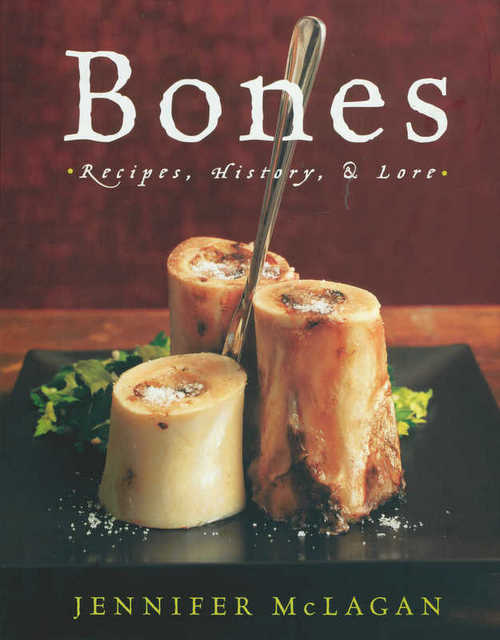
Bones: Recipes, History, and Lore by Jennifer McLagan is an important cookbook because it refocusses the food community on the importance of bones in providing flavour in food. Jennifer McLagan has put together a well-constructed book with lots of interesting information and recipes.
The book may appear relatively simple on the surface with chapters covering Beef and Veal, Pork, Lamb, Poultry, Fish, Game and a final short chapter on desserts using bone marrow. But take the time to read this tome and you will realise that it explores important ideas about flavour, lots of ideas about HOW to cook and lots of ideas about how to cut and present meat with bones in it.
You can read a more detailed review by clicking on the link below:
Bones – Recipes, History & Lore
38 – Lulu’s Provencal Table by Richard Olney

Richard Olney has set out to capture something about a legendary cook and inspirational figure from Provence, namely Lulu Peyraud. However, to many, Olney is a legend in his own right having been one of the key figures responsible for the legendary Time-Life cooking series (which still remain as useful and relevant as they were the day they were published) as well as other cooking classics such as his wonderful Simple French Food.
Lulu Peyraud, from the legendary Domaine Tempier, has an empathy with, and understanding of, Provencal ingredients that is inspirational.
The over 150 recipes read like a roll call of the best of Provence – tapenade, anchoiade, brandade, pissaladiere, bagna cauda, sardines grillees, bouillabaisse, aigo boulido, bourride, daurade au fenouil, daube a la Provencale, gigot a la ficelle, ratatouille and merveilles.
This is an essential book for any serious food lover’s library.
You can read a more detailed review of this book by clicking on the link below:
39 – Flavors of Puglia by Nancy Harmon Jenkins

Flavors of Puglia is characterised by beautiful writing:
“The mimosas flowered earliest, fuzzy yellow pellets cascading in great clusters from high, supple branches, quickly followed by the almond trees, their ghostly pale drifts of blossom delicately scented and brushed with pink.”
It also contains authoritative descriptions of the region, the food and the culture that are compelling reading. In fact, although this is primarily a ‘cookbook’ it is also the sort of book that you can sit down and read from cover to cover in a quest to find out much more about this emerging food region.
Each recipe is prefaced by a description of either where the recipe came from or the cultural context for the recipe.
We enjoyed the book and recommend it as both an interesting survey of the food of the area and a source of inspiration for dishes to try at home. We really like the way that the book reaches beyond the stereotype views of Italian cooking.
You can read a more detailed review of this book by clicking on the link below:
40 – Middle Eastern Cookery by Arto der Haroutunian
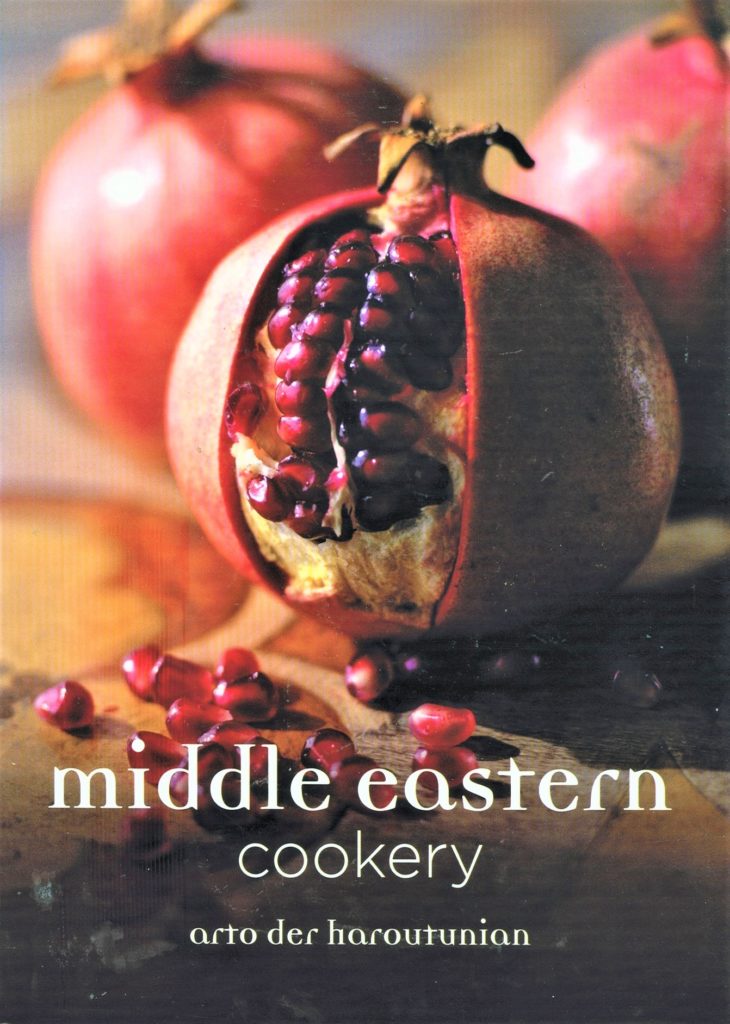
Arto der Haroutunian is a brilliant observer of the food of the Middle East and North Africa. Each of his publications has become a classic in its own right. We have chosen his wonderful book on the food of the Middle East to represent his writings in this collection of great cookbooks.
It is a thoroughly researched, clearly written classic that is worth returning to again and again whenever you feel inspired to cook any of the great dishes of this region.
The author was an interesting character. He was born in Aleppo in Syria and therefore was lucky enough to be initially raised in one of the great food centres of the world, in fact the home of the famous Muhammarah walnut and pomegranate sauce among many other fabulous dishes.
You can read a more detailed review by clicking on the link below:
41 – Ottolenghi: The Cookbook by Yotam Ottolenghi and Sami Tamimi

Ottolenghi: The Cookbook is a beautiful book full of delicious recipes that you immediately want to try out. Authored by Yotam Ottolenghi and Sami Tamimi, the book is a compendium of some 140 recipes divided among vegetables (including sections on eggplant, greens and root vegetables), meat and fish, baking and patisserie and a final section on tips for your larder.
The book is divided into three main sections covering vegetables, legumes and grains, then meat and fish and then baking and patisserie. We were interested to observe that the meat ad fish section is the shortest at only 37 pages which gives readers the idea that vegetables can be the heroes of a meal!
In fact one chapter in the vegetables section is entitled “Mighty eggplant” which clearly raises this important vegetable to a prominent position.
In the full review of this book we discuss some of the recipes in fuller detail. They are all good recipes and they all seem to work well!
You can read a more detailed review by clicking on the link below:
42 – Baking with Passion by Dan Lepard and Richard Whittington
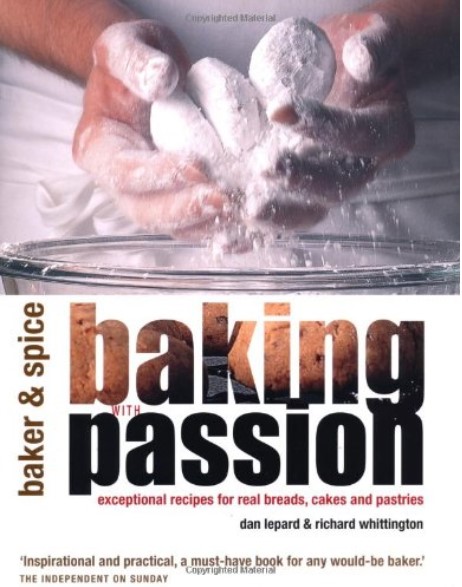
Baking with Passion is an important book because it carefully describes the techniques required to create great breads, cakes and pastries.
The recipes are sourced from the London specialty bread shop Baker and Spice and have been tested and tuned by master baker Dan Lepard.
Following a discussion of sourdough starters, a number of well-written recipes for a variety of breads are provided including sourdoughs, fougasse, focaccia and grissini.
The authors then delve into other forms of baked goods such as brioche, clafoutis, crumpets, doughnuts, krantz cake and soda bread to give but a few examples.
They then move into cakes and pastries. Try the lemon cake and the recipe for pithiviers – they are both wonderful recipes.
This is an apparently simple book that treats the reader with respect by providing enough in-depth explanation so that you know why you are doing the steps required for producing such artful baked goods.
You can read a more detailed review of this book by clicking on the link below:
43 – Salt to Taste by Marco Canora
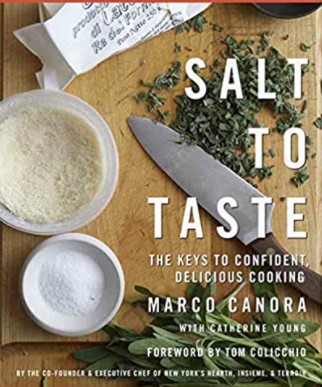
Salt to Taste by Marco Canora is a welcome addition to our cookbook collection. It reveals the passions and techniques of one of New York’s most talented chefs whose work we have admired for many years.
In fact, the meals we have eaten at Hearth were some of the most satisfying eating experiences we have had for a long time.
The two page introduction by legend Tom Colicchio is very generous and traces Marco’s progress through restaurants including Gramercy Tavern, his time at his mother’s trattoria on Martha’s Vineyard, his stage at the iconic Cibrèo in Firenze and his time with Colicchio at Craft prior to moving on to his own establishments.
We love the fact that the book represents a progress to simpler dishes (which, in turn, paradoxically require more finely-honed cooking skills) and to those dishes that he loves to eat.
You can read a more detailed review of this book by clicking on the link below:
44 – Crescent City Cooking by Susan Spicer

Crescent City Cooking by Susan Spicer surveys the recipes of her native New Orleans and is an excellent book to add to your cookbook collection if you are interested in the cuisine of this fascinating city.
We thoroughly enjoyed many meals at her Bayona restaurant and also at Herbsaint which she established with Donald Link. while working in New Orleans many years ago we stayed in an apartment just a short walk from Herbsaint and it became or “go to” canteen.
However, the book delivers much more as Susan Spicer’s food tastes are quite eclectic, especially from the formative time she spent in France, and the book contains recipes with influences from throughout the world, such as the Indian bhajis that she used to serve with grilled scallops that we found to be such a perfect combination.
You can read a more detailed review by clicking on the link below:
45 – Country Cooking of France by Anne Willan
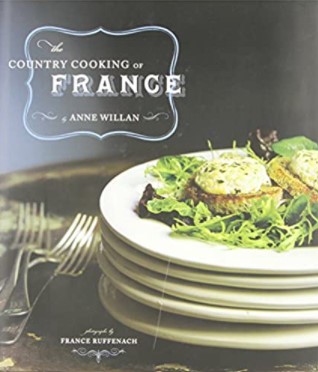
We have a number of books on the country cooking of France and we have included two in this Top Fifty Cookbooks survey.
What we are looking for is first of all authority – in other words, does the author have a deep understanding of the foods of this very diverse country or is it just another flimsy attempt to cobble some recipes together.
This is definitely not the case with Anne Willan – she has a very profound understanding of the foods of the regions through her long association with this country.
We have also included the book be Jean Ferniot (below) entitled French Regional Cooking, because he also shows that he understands the differences intuitively.
Until you have explored France in detail it is impossible to understand the drivers behind the myriad differences between regions that are sometimes quite close together. For example, the region of Alsace with its Germanic influences sits just above the Jura which the Spanish ruled hundreds of years ago and left their legacy behind in both the foods and the wines.
You can read a more detailed review of this book by clicking on the link below:
46 – Commander’s Kitchen by Ti Martin and Jamie Shannon

Our many trips to New Orleans have been rewarding in that we have reached a deeper understanding of the Creole and Cajun food cultures and we have been able to determine which restaurants cater mainly for tourists and which ones are trying hard to maintain exacting standards and to showcase the best of the local recipes.
Let’s be brutally honest – there is a lot of bad food in this southern city especially in restaurants in the tourist areas such as the French Quarter. However there are also a number of fine restaurants serving authentic local cuisine.
Such a place is Commander’s Palace. This is a restaurant run by a branch of the ubiquitous Brennan family that dominates the New Orleans dining scene. We expected it to be good but nothing exciting. What we experienced was precisely the opposite.
We were lucky enough to visit the restaurant during the time that Jamie Shannon was at the stoves before his untimely death. We admired his skill at interpreting the local cuisine.
Overall we found this to be a beautifully produced book with something of interest on every page.
You can read a more detailed review of this book by clicking on the link below:
47 – Provence: The Beautiful Cookbook by Richard Olney
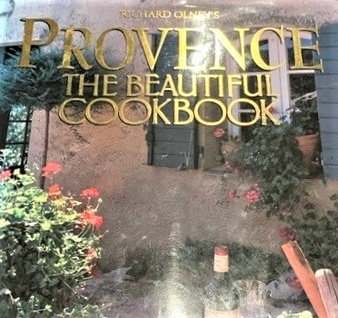
We can’t believe that we are including a coffee table book in this list. However, Richard Olney could not do anything by half measures and in this glossy publication he has captured the essence of food in Provence brilliantly.
The photographs are stunning and the descriptions of the various regions is brief but captures the essence of the area. The recipes are divided along traditional lines of Soups and Starters, Vegetables, Desserts and so on, but wherever a recipe is favoured in a sub-region such as Vaucluse or the Var then this is indicated.
This is a large format book that is well worth adding to your collection if you want to learn more about one of the greatest food regions in the world.
You can read a more detailed review of this book by clicking on the link below:
Provence – The Beautiful Cookbook
48 – Bar Tartine – Techniques and Recipes

Bar Tartine has been a very successful venture in San Francisco, and many years after, we still clearly remember a breakfast we had there where the flavours were striking and pure.
We particularly like this book because it concentrates on techniques rather than just giving a recipe to follow.
We believe that explaining techniques and allowing readers to understand why a particular approach is adopted is far more important than just providing a mindless set of instructions.
This is why we love the book called Masterclass: Expert Lessons in Kitchen Skills where twelve experts ranging from Elizabeth David to Richard Olney take on one topic and explain WHY you need to make a recipe in a certain way. David spends 7 pages explaining how to make a mayonnaise by hand, for example.
In this book authors Balla and Burns (with excellent photographs by Chad Robertson) range over many topics from drying herbs and alliums, making powders, creating spice mixes, sprouting and soaking, making vinegars, pickles and preserves and making stocks.
The second half of the book is then dedicated to recipes that apply the techniques discussed in the first half. It covers recipes for soups, salads, shared plates, a harvest party and sweets.
In the more detailed review below, we explain how the techniques discussed in the book come together in the recipe section.
You can read a more detailed review of this book by clicking on the link below:
Bar Tartine Techniques and Recipes
49 – French Regional Cooking by Jean Ferniot
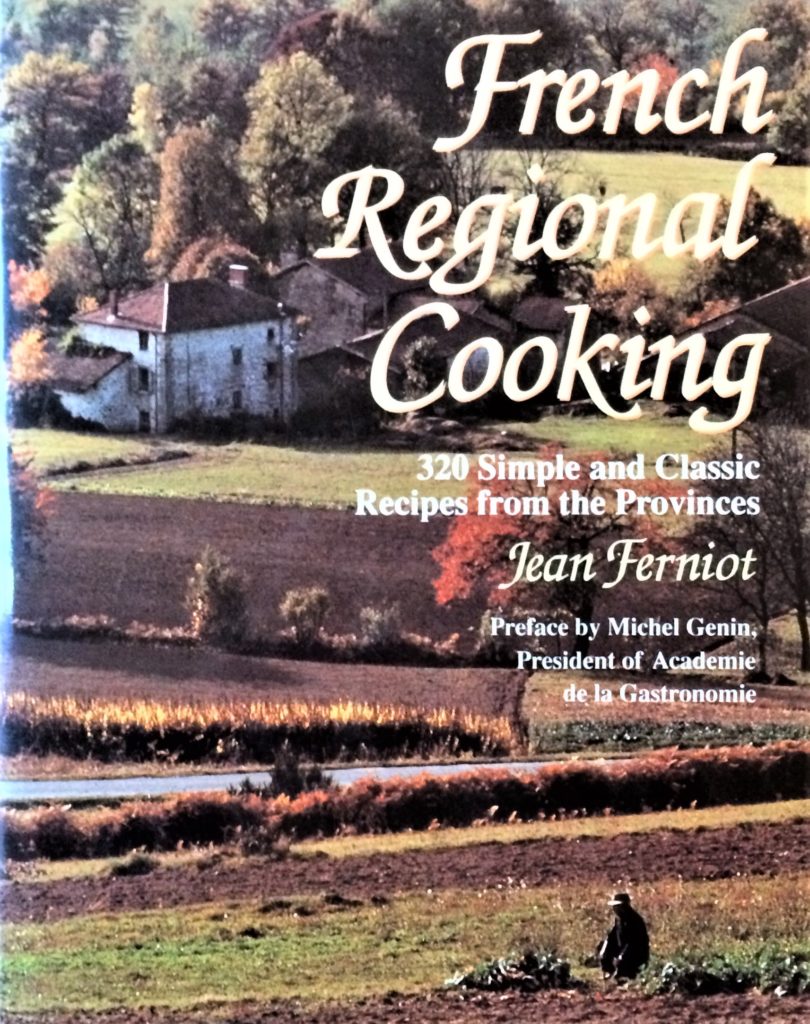
This book teeters on the edge of being a “coffee table book” but is dragged back by having detailed recipes for many of France’s best dishes from across the country, with some of the more remote areas being well-represented. In fact, we were excited to see a recipe for Estofinado in the Auvergne region in the wider Massif Central section of the book. This stockfish dish is normally only every discussed when talking about Niçoise cuisine.
The Massif Central region is also represented by Soup aux Choux, the very rich Omelette Brayaude (cheese, ham and potato omelet), Farcidure (a delicious local potato cake), Falette (stuffed, rolled veal breast from the local cattle) and, of course Choux Farci, Aligot and Clafoutis that are endemic in this region.
Each region (there are 8 – North, East, West, Atlantic Coast, Alpine East, The Massif Central, South – Mediterranean Coast, and the Southwest and the Pyrenees). there is also a chapter on the wines of France by a different author.
There is an introduction to each region with some excellent photographs and descriptions of the culture of the region in which the food and the rituals surrounding the eating and drinking plays such an important part.
You can read a more detailed review of this book by clicking on the link below:
50 – The Art of Eating by Ed Behr
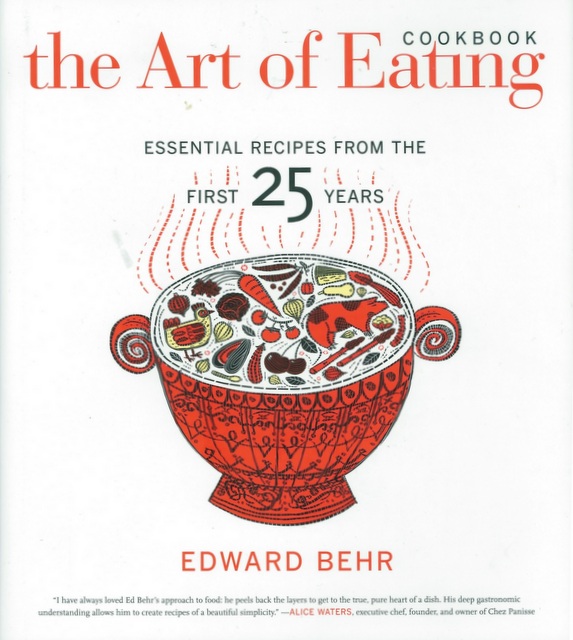
The Art of Eating by Ed Behr is a compilation of his fascinating articles from his long-running newsletter (the subtitle to this book is The First 25 Years) that we have subscribed to for many years.
The range of topics he and his co-writers have addressed during that 25 years has been particularly impressive and he never talks down to his audience but instead takes you on an in-depth journey into an area he finds interesting.
The topics range from breads (including farinata and schiacciata which we address in the full review), charcuterie (including the lovely rillons that we enjoy when in the Loire Valley), soups (including the delicious mussel soup called “billy by”), pasta and polenta (including a recipe for a walnut sauce), a lengthy vegetable section which includes a technique for stuffed cabbage and a recipe for zucchini pudding, a meat section that includes a discussion of one of our favourite dishes from Alsace, namely Choucroute and finishing off with a dessert section that includes a recipe for Pound Cake that derives from the many recipes published in the 18th Century cookbooks of England.
You can read a more detailed review of this book by clicking on the link below:












